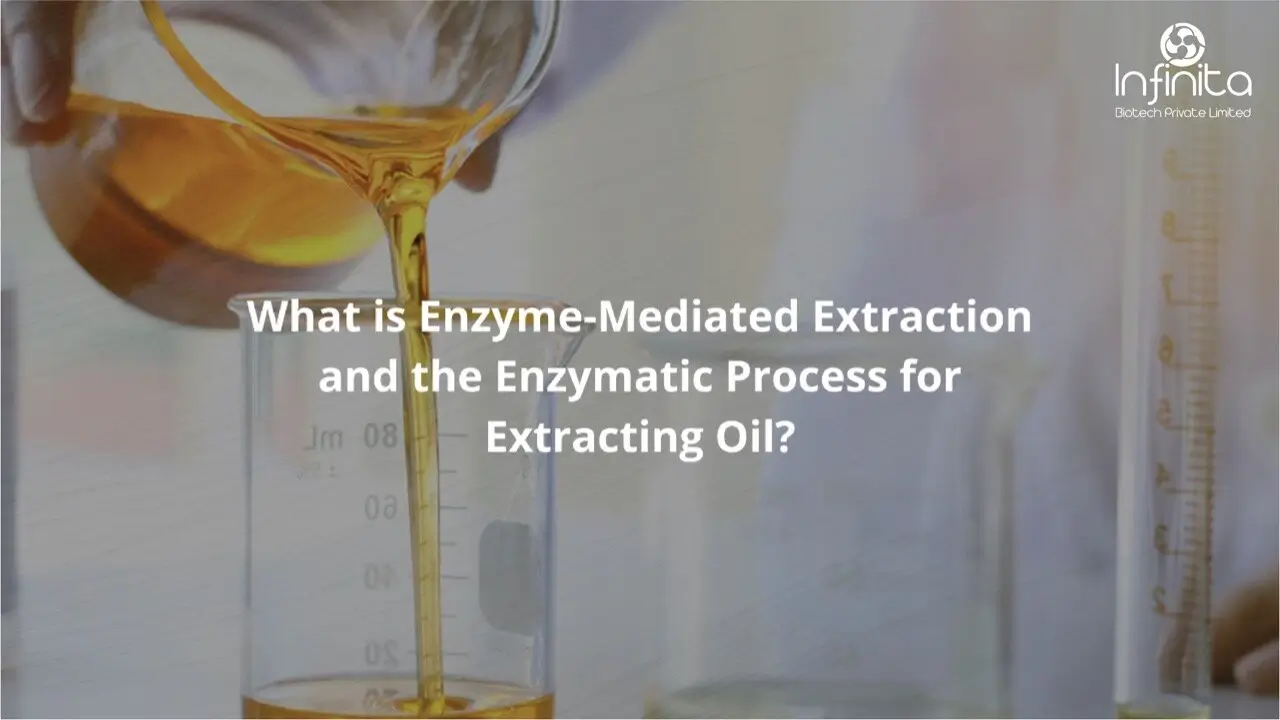There is an increasing demand for edible oil all over the world. Edible oils are extracted from oilseeds and other oil-rich natural sources like sunflower, groundnut kernels, rice bran, coconuts, palm, soybean, rapeseeds, among other sources. Oilseeds thus are a valuable cash crop worldwide. But there is a limit to the growing and production of edible oilseeds. There is a greater emphasis on improved oil extraction methods from the seeds than from the conventional methods. The conventional edible oil extraction methods are hydraulic pressing, expeller pressing, solvent extraction, and aqueous extraction processes. The major limitation of these processes is that a large amount of residual oil is left in the oil cake after the extraction process. Even using solvents like hexane for soaking oilseeds for higher extraction are energy-intensive processes that require a substantial capital infusion for industrial machinery. Enzyme-based oil extraction techniques combined with the conventional methods are emerging as alternative and more eco-friendly options with better yields.
What is Enzyme Extraction?
Enzymes like cellulase, hemicellulase, pectinase, and even proteases are used for the degradation of cell walls in oilseeds. Using enzymes loosens the oil sacs embedded in the cell structures, softening the oilseeds and increasing their porousness. After using enzymes, individual parts of oil seeds like oil, protein, and polysaccharides are easily separated for further processing. Using enzymes increases the extraction and separation of oil from oilseeds and also eliminates toxic particles from the oil. Through their antioxidant and biocatalytic properties, they catalyze proteins, carbohydrates and lead to lipid conversion during oil extraction processes.
Enzymatic Extraction of Oil in Detail
The enzymatic hydrolysis process is the pretreatment of oilseeds with enzymes. This leads to a quick softening of oilseed coats. In other words, enzymes digest the complex cell walls of oil seeds which increases their permeability leading to better oil extraction. They open up oil cell walls and break the complex lipoprotein and lipo-polysaccharide molecules into small parts which can be processed further. These lead to a release of oil from lipid bodies trapped between carbohydrate and protein structures within the seeds.
Enzymatic extraction of oil requires certain factors like temperature, optimum pH levels, moisture, grinding, and reduced size of oilseeds for their efficient working. This leads to efficient and increased extraction of oil with a higher concentration of nutrients. Utilizing enzymes for oil extraction is an eco-friendly process that reduces BOD (Biological Oxygen Demand) by 75% and COD (Chemical Oxygen Demand) up to 45% of the residue and wastewater generated. Enzyme extraction also lowers acid development and oxidation which may occur during further processing and storage.
Enzymes Used in Oil Extraction
Different enzymes are used depending on the oilseeds and the extraction process used for oil recovery. Enzymes such as proteases, cellulases, and hemicellulases are used for improved recovery of oil from solvent and expellers extraction methods. Pectinase and cellulase are the most effective enzymes that increase oil recovery by nearly 20%. Enzymatic extraction of oil should primarily contain a combination of several enzymes like cellulases, hemicellulases, pectinases, and proteases. Other enzymes used for the extraction of edible oils could include polygalacturonase, alpha-amylase, carbohydrases, and galactomanase.
Sources of Enzymes for Edible Oil Extraction Methods
The enzymes used in oil extraction are sourced from a variety of thermophilic fungus species. Enzymes extracted from them have greater thermostability and can be used in industrial processes requiring ambient temperatures. Some of these thermophilic species are Aspergillus fumigatus, Humicola lanuginosa, and Sporotrichum.
Benefits of Enzymatic Extraction of Oils
a. It is an eco-friendly and comparatively inexpensive process that generates little waste.
b. It does not need degumming as the process includes a water-based medium with phospholipids being separated from the oil.
c. This process removes unwanted particles present in oilseeds.
d. It refines free fatty acids and darker colored oils.
e. It reduces BOD (Biological Oxygen Demand), COD (Chemical Oxygen Demand) levels, lowers acid development and oxidation during further processing and storage of the finished product.
f. Enzyme extraction of oil increases productivity, efficiency, and the quality of the extracted oils.
g. Decreased energy consumption and increased nutritional value of edible oils.
Conclusion
Enzyme extraction of oil increases the efficiency, productivity, and quality of edible oil extracted. These are eco-friendly processes that require a low capital investment, lower energy consumption, and simpler manufacturing processes. Using enzymes for oil extraction should be preferred over the conventional methods which require more capital, high energy consumption, and also pollute the environment.

